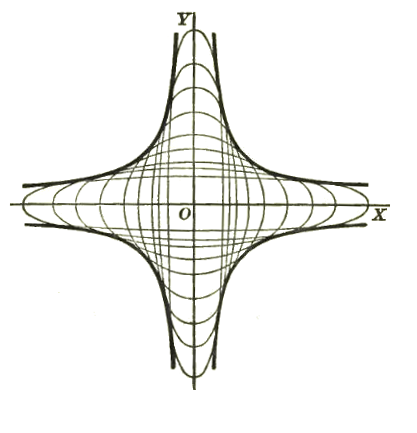- Considering as the variable parameter, we wish to find the envelope of this family of normals. Differentiating (A) with respect to ,
,
- and solving for ,
(B) .
- Substituting this value of in (A) and solving for ,
(C) .
- (B) and (C) are then the coordinates of the center of curvature of the parabola. Taken together, (B) and (C) are the parametric equations of the evolute in terms of the parameter . Eliminating between (B) and (C) gives
,
the rectangular equation of the evolute of the parabola. This is the same result we obtained in Illustrative Example 1., §181 p. 183, by the first method.
133. Two parameters connected by one equation of condition. Many problems occur where it is convenient to use two parameters connected by an equation of condition. For instance, the example given in the last section involves the two parameters and which are connected by the equation of the curve. In this case we eliminated , leaving only the one parameter .
However, when the elimination is difficult to perform, both the given equation and the equation of condition between the two parameters may be differentiated with respect to one of the parameters, regarding either parameter as a function of the other. By studying the solution of the following problem the process will be made clear.
Illustrative Example 1. Find the envelope of the family of ellipses whose axes coincide and whose area is constant.
- Solution. (A)
- is the equation of the ellipse where and are the variable parameters connected by the equation
(B) ,
- being the area of an ellipse whose semi-axes are and . Differentiating (A) and (B), regarding and as variables and and as constants, we have, using differentials,
, from (A),
and , from (B).
















